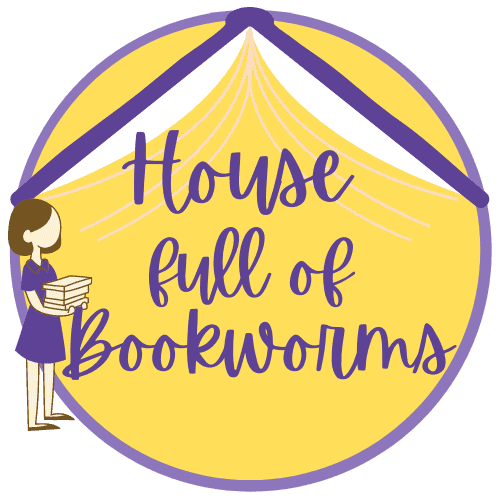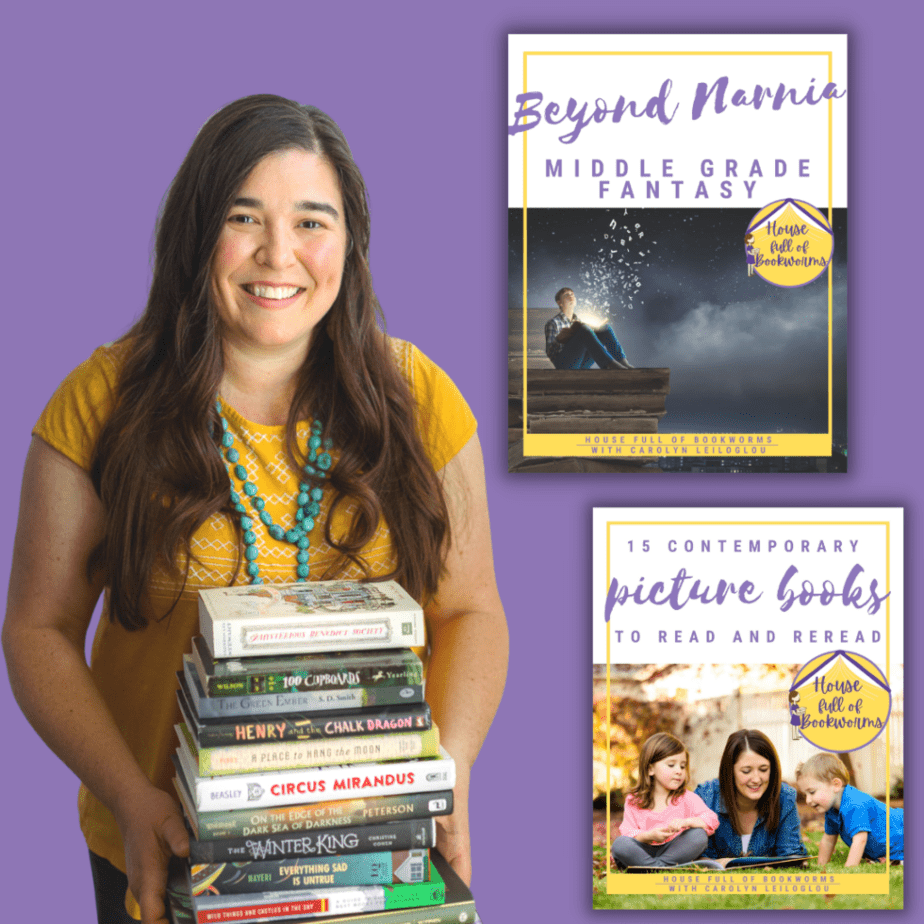I’ve been wanting to write a post about my favorite middle-grade series for a while, but it’s so hard to write. I guess I’m afraid I won’t get it right. Because I really do want you to love The Wingfeather Saga as much as I do.
And now that I’ve read/listened through the books for the third time, I think I’m ready to take a stab at reviewing them.
The World of the Wingfeather Saga
The Wingfeather Saga begins with On the Edge of the Dark Sea of Darkness. Siblings Janner, Tink, and Leeli live with their mother and grandfather in a world ruled by Fangs, evil, lizard-like creatures. Their world is turned upside down with the revelation of a family secret that their mother has kept from them. Their subsequent adventures in North or Be Eaten, Monster in the Hollows, and The Warden and the Wolf King take them all across their world, and eventually face-to-face with their enemy Gnag the Nameless.
The plot is full of adventure, peril, monsters, battles, and humor. And on that front alone, these are great stories.
But what makes these stories amazing is their characters.
Why It’s Good, True, and Beautiful
The characters in the Wingfeather Saga aren’t perfect people. They don’t always do the right thing. In fact, at the beginning of the story, they have quite a lot of flaws to work through, especially Janner and Tink. Your kids will identify with Janner when he resents having to take care of his younger siblings. They’ll get why Tink doesn’t want to shoulder the responsibility placed on him. And while we see into these character’s thoughts, we still get why they are wrong. And the terrible circumstances they find themselves in? That’s what pushes and molds their character into the heroes they must become.
And honestly, it’s really something I can’t describe. Sometimes when you read a book that’s profoundly true and beautiful, it’s hard to express it in words. But when you read this series, I know it will resonate with you. It’s the human experience of life, suffering, and character formation. And the Biblical narrative of redemption and self-sacrifice are more beautifully portrayed here than probably any other book I’ve read (aside from Narnia and Les Miserables). There is sadness in the ending, but there is also pervasive hope and promise.
Let me give you a taste for the substance of these books by naming a few of the themes that are woven throughout the saga: family relationships, the power of art, self-sacrifice, sin-nature, parental love (including adoptive), and the longing to be loved and belong.
And don’t think that all these big themes will turn your kids off to these books. They are among my kid’s all-time favorite books. In fact, when their dad would finish a book in the series, my two older kids would grab their Kindles to immediately start re-reading it. They’ve also both listened to the audiobooks.
If you are already a fan, there’s a brand new book that adds to the series! The Wingfeather Tales includes short stories by Andrew Peterson, A.S. Peterson, Jennifer Trafton, Douglas McKelvey, Jonathan Rogers, and N.D. Wilson. I’ve only just started reading it, but it’s great fun so far.
Tips for Reading
Some people seem to get bogged down in the first book and wonder if they should go on. So, here are my tips for enjoying the Wingfeathers.
- Skip the footnotes, especially if you are reading aloud. The first book in the series is filled with footnotes, and it’s easy to get bogged down in them (a believe they are, in many ways, an homage to J.R.R. Tolkien). Most of the information is for world-building purposes and is not essential to the plot. The details that do come in later will be recapped again in book four.
- If your kids are scared of the sillier monsters (e.g. toothy cows) in the first book, they aren’t ready for this series. The books grow in intensity. This series is too good to miss, but wait till your kids are old enough to appreciate it.
- If you don’t love the first book, trust me, it gets so much better. The last two books will make you cry (in a good, redeeming way). If you see flaws that bother you in the main character, that’s where the author is working on him. Keep reading.
- Don’t miss the power of reading these together as a family. If your kids are between the ages of eight and fourteen (maybe even older), I’d highly recommend you read these books as a family. My husband read them to our older kids when they were seven and nine, and I can’t wait for him to read them to the whole family in a few years when my little are old enough.
- Try the audiobooks. The narrator of the first two books does a fine job, and if you are tempted to get overwhelmed by the footnotes, this is the way to go. But the last two books are narrated by the author himself, Andrew Peterson, and they are spectacular.
If you haven’t heard my conversation with Sarah Mackenzie on the Read-Aloud Revival podcast, we talk all about navigating fantasy for Chrisitan families. The Wingfeather Saga was my top recommendation, but we talked about many other books as well and why I believe your kids can get a lot out of reading them. Click HERE to learn more.









I have now purchased four complete sets for us and others. I can’t express how deeply these stories have moved me. I will continue to recommend and purchase these for many years to come!
Oh, it’s always good to “meet” a kindred spirit who loves The Wingfeather Saga! Are you a fan of Andrew Peterson’s music as well? I feel like many of the same themes from the books are expressed in his songs.
Oh, my goodness, I love this series SO much!
I’m not usually a re-reader, but it was just as good the third time through!
Yes! Yes! Yes!
I read the Wingfeather Saga to my kids (ages 5, 7, and 9) and we all fell in love with them. We talked about them so much, my husband listened to them on his way to work. I can’t think of a book or series that affected me so much. We are still talking about them 6 months after finishing The Warden and the Wolf King. I can’t wait for my youngest to be old enough for us to reread them with her.
I tell people that they will make you cry in a I want to be a better person, mom, sister, friend, and Christ-follower sort of a way.
(And we love his music also!)
Amen to all of that! Have you had a chance to read The Wingfeather Tales yet? We are on the second story and really enjoying jumping back into that world. 🙂
I have recommended this series countless times. I agree with the audiobook recommendations. I found the series difficult to read aloud due to the unusual names in the books, but the audio versions (especially the last two) are magnificent. Our entire family enjoys the series (kids range in age from 10-16); I think the middle-grade category given by the publishers is stifling. The series is perfect for all ages!
I’m so glad to hear that it’s just as appealing to your older kids! My oldest will be a teen by the time my youngest is ready for us to read it aloud as a family again. I do feel that it’s a classic like Narnia in that way.
Thank you for doing this.
Absolutely!